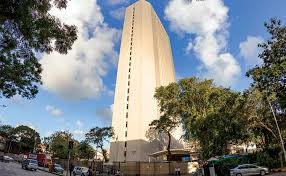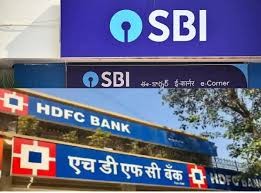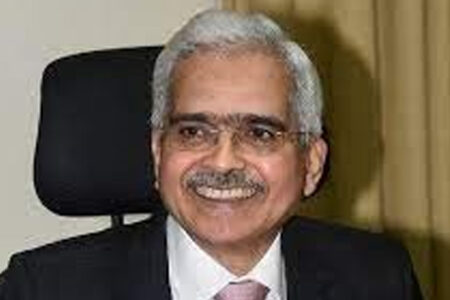Happy Birthday, Reserve Bank of India.
The Indian central bank turns 90 today. The world’s other nonagenarian central banks include the Central bank of Argentina and Bank of Canada – both born in 1935.
Of course, the story of central banking goes back to the 17th century. In 1668, the Swedish Riksbank was set up as a joint stock bank, chartered to lend government funds and act as a clearing house for commerce. This marked the birth of central banking.
A few decades later, in 1694, the Bank of England was founded, also as a joint stock company, to purchase government debt. In 1800, Napoleon Bonaparte set up Banque de France to stabilise the currency after the hyperinflation of paper money during the French Revolution. The Bank of Finland was established in 1812 soon after Russia took over Finland from Sweden to become a grand duchy.
The US Federal Reserve made its appearance in 1913 – seven years after the Swiss National Bank. In Asia, while the Bank of Japan was founded in 1882, the People’s Bank of China is 13 years younger than the RBI. Finally, the current European Central Bank was set up in 1998 to launch the Euro, a decade after the decision was taken to build an economic and monetary union.
The activities of central banking have been evolving over centuries. For instance, before the First World War broke out in 1914, central banks didn’t attach great importance to maintaining the domestic economy’s stability. The war was the trigger for concerns about employment, real activity, and the price level. After the Great Depression, again, the contours of central banking changed. The Fed was made subservient to the Treasury; it regained its independence from the Treasury in 1951.
Let’s turn our focus back on the birthday boy – the RBI.
Since its creation on April 1, 1935, 25 governors have been in the driver’s seat. Benegal Rama Rau steered it for the longest period (over seven-and-a-half years, from July 1, 1949 to January 14, 1957), while Amitav Ghosh was at the wheel for the shortest (just 20 days from January 15, to February 4, 1985). Ghosh wasn’t the only one to have a very short stint. KG Ambegaonkar, the fifth governor, held the office for six weeks, between January 14 and February 28 1957, after Rama Rau resigned. BN Adarkar too was in the corner room for about six weeks, between May 4, 1970 and June 15, 1970.
Of the eight RBI governors who have held office since the 1991 economic liberalisation, Bimal Jalan had the longest stint (November 22, 1997 to September 6, 2003) and S Venkitaramanan, the shortest. Current Governor Shaktikanta Das will overtake Jalan before completing his second term in December. Once he completes his second term, Das will be only the second governor (after Rama Rau) in the RBI’s 90-year history to be at the helm for at least six years.
YV Reddy had got a five-year stint at one go and Urjit Patel had quit a little over eight months before his three-year term ended.
Among the governors in the post-liberalisation lot, Das, a 1980 batch IAS officer of the Tamil Nadu cadre, has the most challenging assignment. An economy dreaming of soaring to $5 trillion sank into recession as the Covid-19 pandemic hit the world in 2020. Das ratcheted the interest rate down to a historic low, flooded the system with money, and tried to tackle the unprecedented crisis with many unconventional measures.
Of the rest, Venkitaramanan, Jalan, D Subbarao and Raghuram Rajan faced equally testing times. Jalan moved into the RBI at the height of the East Asian crisis when the local currency was sinking every day. Subbarao watched the collapse of the iconic US investment bank, Lehman Brothers Holdings Inc, and the global financial crisis. Rajan faced the taper tantrum or spike in treasury yields after the US Federal Reserve started putting the brakes on its quantitative easing programme, a falling rupee, widening current account deficit and rising inflation.
The 1991 liberalisation of the economy happened in the middle of Venkitaramanan’s tenure, while Chakravarthi Rangarajan shepherded it in the early days of liberalisation. Patel’s term, a quarter of a century later, was a baptism by fire as India demonetised high-denomination currency notes in November 2016.
Those who had a ringside view of the 1991 balance of payments crisis say Venkitaramanan, and not Das, had the toughest assignment.
I guess there’s no comparison as the context of the two assignments is radically different.
Das faced the Covid-19 pandemic’s challenge in an interconnected world where the Indian economy is the fifth-largest by nominal GDP (India overtook the UK in the final three months of 2021 to become the fifth-largest economy). The RBI now has a substantial international standing and is taken seriously. The whole world faced the same challenge; information was shared and there was synergy in policy formation among different central banks.
Venkitaramanan batted on a very different pitch. India had to face the challenge alone in an arrogant world in which the Indian economy was just a peripheral player. The endowment funds of some US universities were bigger than India’s foreign exchange reserves during his time.
Among all, Reddy’s was the best time. Till the last leg, India had high growth and low inflation. Through his tenure, Reddy kept on raising the policy rate, but that didn’t dent the credit offtake and economic growth — something that foxes economists.
Many say it was Jalan’s legacy. They also saw irrational exuberance at that time. But Reddy continuously tightened the regulatory norms, which were already stringent by global standards. He had put in place an array of safety valves to rein in an overheated economy — which came in handy when Subbarao tackled the impact of the 2008 crisis.
If one is looking for the RBI story after 1991 — how the central bank evolved under different governors and its fight for independence — the narrative will probably run this way: Rangarajan and his deputy, SS Tarapore, were hardcore monetarists. The powerful duo changed the equation with the government. Jalan, an economist who had served at the International Monetary Fund (IMF) and World Bank, was a pragmatist who knew how to get things done. Ditto for Das, even as Reddy remains the most cerebral central banker.
The Financial Sector Legislative Reforms Commission wanted to strip the RBI of many of its responsibilities and maim it, but failed as Rajan opposed it tooth and nail. Meanwhile, a multiple-target central bank has turned into an inflation targeter. And, under Das, it has been doing a commendable job of balancing growth and inflation, maintaining financial sector stability and adding resilience to the system.
Next week, we will view some of the governors up close – how they have shaped the institution.
Postscript: A status-quo policy
The monetary policy committee (MPC) will hold its first meeting of 2024-25 (FY25) this week. What will the outcome be?
It will be a status quo, no-action policy. For the seventh successive MPC meeting, the repo rate will remain unchanged at 6.5 per cent, and the stance will continue to be “withdrawal of accommodation”.
There is unlikely to be any change in the RBI’s estimate of growth – 7 per cent in FY25. The current year’s growth estimate could be raised slightly from 7.3 per cent.
What will be the projection for inflation? Falling core inflation is a big positive, but food inflation remains a worry. The monsoon will play a critical role. Overall, its projection is likely to remain around 4.5 per cent.
Cautious optimism will be the undertone, but a rate cut is unlikely anytime soon.
This column first appeared in Business Standard.
The writer of this column writes Banker’s Trust every Monday in Business Standard.
Latest book Roller Coaster: An Affair with Banking
Twitter: TamalBandyo
Website: https://bankerstrust.in



